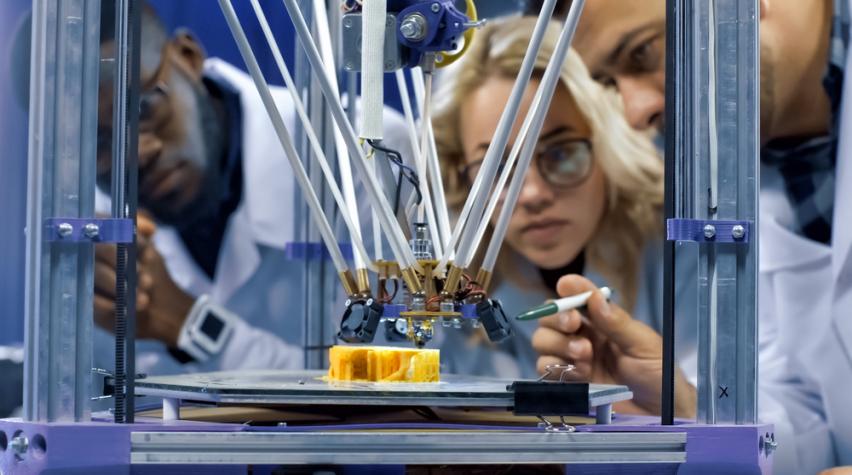
AIChE's new Journal of Advanced Manufacturing and Processing addresses changes that embody the convergence of the chemical, physical, material, and digital realms. Chemical engineers are uniquely positioned to take advantage of this convergence because our curriculum emphasizes the translation of physical and chemical phenomena into processes at scale.
However, it would be hubris to believe that chemical engineers alone will make innovative manufacturing processes a reality — the roles of other engineering and scientific disciplines are equally vital, and embracing this multidisciplinary future will bring about the greatest advances.
Therefore, to prepare ourselves to be a part of advanced manufacturing, we need to both strengthen our core and expand our periphery. For example, a component of advanced manufacturing will employ process intensification, essentially improving reaction and heat and mass transfer rates by an order of magnitude or more.
Advances through collaboration
As chemical engineers, we study, design, and manipulate all of these phenomena within the context of different processes and equipment. They are embodied in units such as reactors and membrane separators, as well as integrated devices such as membrane reactors. We need to understand our core curriculum in the context of employing these phenomena in new combinations, as well as how process design at the micro and macro length scales changes the process behavior.
Reaction and transfer rates can be increased by employing novel geometries that reduce or disrupt boundary layers and increase surface areas, or by exploiting new phenomena such as ultrasound or microwaves. This is where advanced processing intersects with — and becomes — advanced manufacturing. These geometries might themselves be manufactured by advanced manufacturing techniques such as 3D printing or electrospinning and will require integrating advanced devices into process steps. This will require bringing together robotics, materials, and digital process control.
Chemical engineers will need to collaborate to co-design the process, equipment, and operating procedures, as these will be more tightly integrated. They will also need to work with material, chemical, and biological scientists to bring their understanding and creativity to new process designs where new ways to understand and improve the underlying properties of materials will be vital to success.
Curriculum that keeps pace with industry
But how will we achieve both breadth and depth? I think we must be willing to commit to greater flexibility in our curriculum and a much greater role for continuing education. The curriculum needs to intensify and modularize, to enable students to understand the broad principles and to increase the variety of systems in which the principles are demonstrated.
The modularization will allow students to go deeper into specific systems, such as biochemical production, and allow them to avoid applications of less interest to them. The variety of modules will enable a greater cognitive flexibility — seeing the principles in different situations will make their generality more apparent.
Lifelong learning might be an overused phrase, but with the right modular curriculum design, we will be able to support shifting needs for specific knowledge and refresh ourselves with advances that are difficult to incorporate within monolithic course structures.
Embrace a future where advanced manufacturing requires chemical engineering principles to assert themselves. Be open to knowledge and skills from diverse colleagues and disciplines. Learn what you can in the present and prepare for learning in the future: Strengthen your core and expand your periphery.
See more information on the Journal of Advanced Manufacturing and Processing.
See more information on the RAPID (Rapid Advancement of Process Intensification Deployment) Manufacturing Institute.


